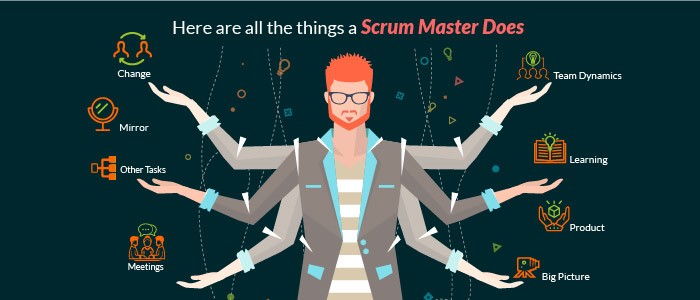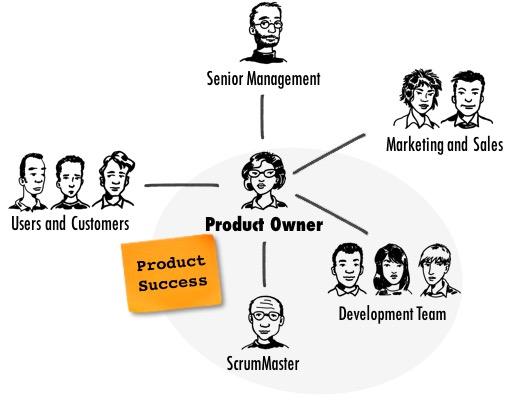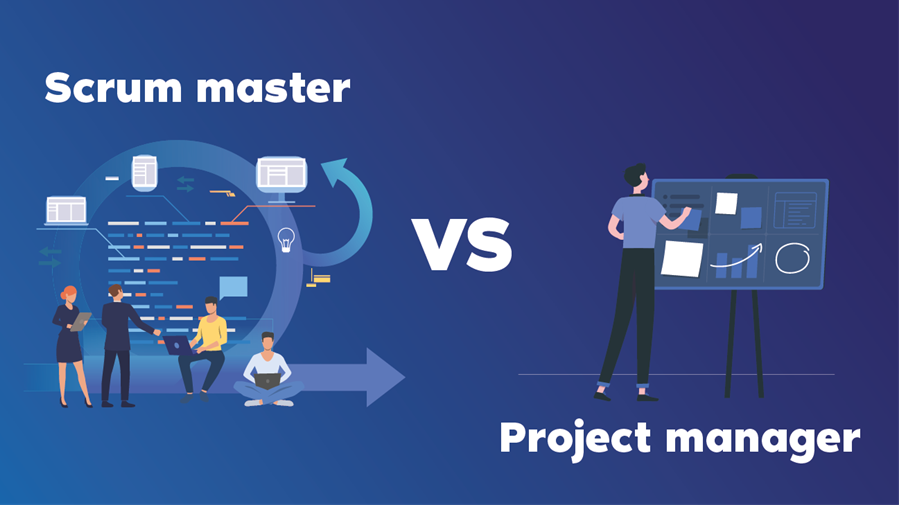Confused About Hiring A Scrum Master Or Product Owner? Here's All The Details You Need About The Two
Scrum Masters and Product Owners bring massive value to the table by helping organizations provide greater customer satisfaction, improving cycle times and ensuring faster time to market, higher quality, better progress visibility, more available ownership, and collaboration.
With billions of dollars in terms of revenues at stake, you need to know whether it would make sense to hire a Scrum Master or Product Owner. The Scrum Master vs Product Owner dilemma is difficult for every business.
It's also essential for your team to understand their role to avoid any miscommunication. Let's try to find out what role each play in an organization to make the decision-making process more manageable.
Scrum Master
When it comes to complex projects and delivery of high-value products, you need a framework that allows an adaptive approach to problems. This framework is called Scrum. It makes handling projects simple and straightforward.
You can provide more customized solutions because the Scrum framework allows you to incorporate constant feedback.

The Scrum Master plays a pivotal part in the Scrum process by integrating the Scrum framework and acting as a facilitator for the Scrum Team, Product Owner, and the organization.
Scrum Master Responsibilities
The Scrum Master is only involved in the management of the process. Decision making is not their responsibility. They use their experience and expert knowledge to guide your team on an end-to-end basis in the Scrum process.
The project's success depends on the Scrum Master because, without them, the other team members don't have a clear understanding of the Scrum domain. This would be the case, especially for new team members.
Scrum Masters coordinate with the engineering and development teams.
- Planning and execution of Agile Methodology: The Scrum Master is well versed in Agile Methodology. This allows them to help the team by sharing the best practices with the team and explain why a task is justified.
- Monitoring sprint progress: If there are any product development roadblocks, the Scrum Master needs to remove these. The sprint's progress also needs to be monitored and conveyed to the stakeholders of the project using artifacts like backlogs or burndown charts. They also need to devise strategies to expedite the sprint progress.
- Serving the Product Owner: The Scrum Master supports the Product Owner by ensuring that the Scrum Team members understand the product domain, scope, and goals. The product backlog is also managed effectively by tools and techniques applied by the Scrum Master. Keeping the product backlog up-to-date is essential.
- Product backlog changes: The product backlog is like a single point of information. Whatever new features, bug fixes, existing feature changes, or other activities delivered by a team are incorporated. The development team needs to be informed about the changes made in the product backlog.
- Adhering to deadlines: The Scrum Master is also responsible for the timely completion of tasks by the development team.
- Sprint reporting: The success of sprint has to be reported by the Scrum Master, who also guides the Scrum Team regarding the right tools for a sprint.
Product Owner
Product Owners are responsible for setting priorities and plans for the Scrum team. To ensure that the roadmap for the product is perfect, the Product Owner needs to interact with the Product Manager.
Since the product manager is the customer's voice and will also help in selecting the Product Owner, you need to choose the right candidate by asking the right product manager interview questions.
A Product Owner requires a broad skill set to be efficient at their job. They need to understand the role of support staff, engineers, marketers, analyze product feedback, study market trends, and collaborate with senior management to get approval for the product vision. Product owners are sometimes confused with product managers.

The Product Owner should be well acquainted with the industry, understand the functioning of the market, how the customer can be motivated, the different stakeholder needs, and how to resolve conflicting needs. They need to have excellent communication skills.
Product Owner Responsibilities
Here are some of the responsibilities of a Product Owner:
- Product Backlog: While the Scrum Master has the responsibility to keep the product backlog up-to-date, the Product Owner has the responsibility to create and maintain it. They need to prioritize, edit, add, and triage backlog items for ensuring clarity, transparency, and visibility of the information.
- Working With the Product Manager: Since the Product Owner is the product's voice and the Product Manager is the voice of the consumer, they both need to join hands to ensure that the product roadmap and vision are on track.
- Product Development: To ensure that the product is developed in alignment with the original product vision, collaboration with the Scrum Master is essential. The product vision needs to be met in terms of the satisfactory fulfillment of the end-users' needs in tune with its strategy and mission.
- Availability of Product Backlog: The Product Owner needs to keep the development team updated about any updates in the product backlog.
- Prioritization of tasks: The Product Owner needs to communicate with all departments and ensure that functions relating to Scrum Master are completed on a priority basis so that stakeholder needs are met. The Product Owner is responsible for product development status updates, stakeholder education, providing solution demos, negotiating budgets, schedules, organizing reviews, and funding.
- Monitoring progress: The project's progress has to be monitored by the Product Owner at every stage. This is important to avoid any chaos and ensure workflow is efficient.
- Developing User Stories: The end-user will understand the benefits of the product by reading the user stories or feature descriptions. The Product Owner develops these user stories.
- Final Approval: The approval for the task and decision regarding whether the acceptance criteria have been met or not rests with the Product Owner. The Acceptance Test-Driven Development has to be supported by the Product Owner. Acceptance or rejection of the story is the Product Owner's choice.
Separate Both Roles for Best Results
If you want the most profitable solution for your business, then both the Product Owner and Scrum Master should have separate roles. The reason for the customer feedback is only available to the Product Owner, not the Scrum Master.
If the Product Owner tries to take the Scrum Master's responsibility, then there will be compromises on the development process and product backlog front. Innovation will take a backseat. Watch your profits soar with a Scrum Master as well as a Product Owner on your team.
Related Posts
Confused About Hiring A Scrum Master Or Product Owner? Here's All The Details You Need About The Two
Scrum Masters and Product Owners bring massive value to the table by helping organizations provide greater customer satisfaction, improving cycle times and ensuring faster time to market, higher quality, better progress visibility, more available ownership, and collaboration.
Can Digital Marketing as a creative industry benefit from the structured and systematic project management processes that are at the core of the advanced software development tools?
When you’re a versed remote worker, you’re already familiar with all the ins and outs of boosting your efficiency on a daily basis, not to mention time management and smart task organization.
Agile software development is really just an umbrella term. The term is basically for a set of frameworks which are based on the values and principles put forth in the Manifesto for Agile Software Development
To build a business you need to first be a leader who adheres to classic principles and be aware of their surroundings as well as in Project Management.


















Comments
comments powered by Disqus